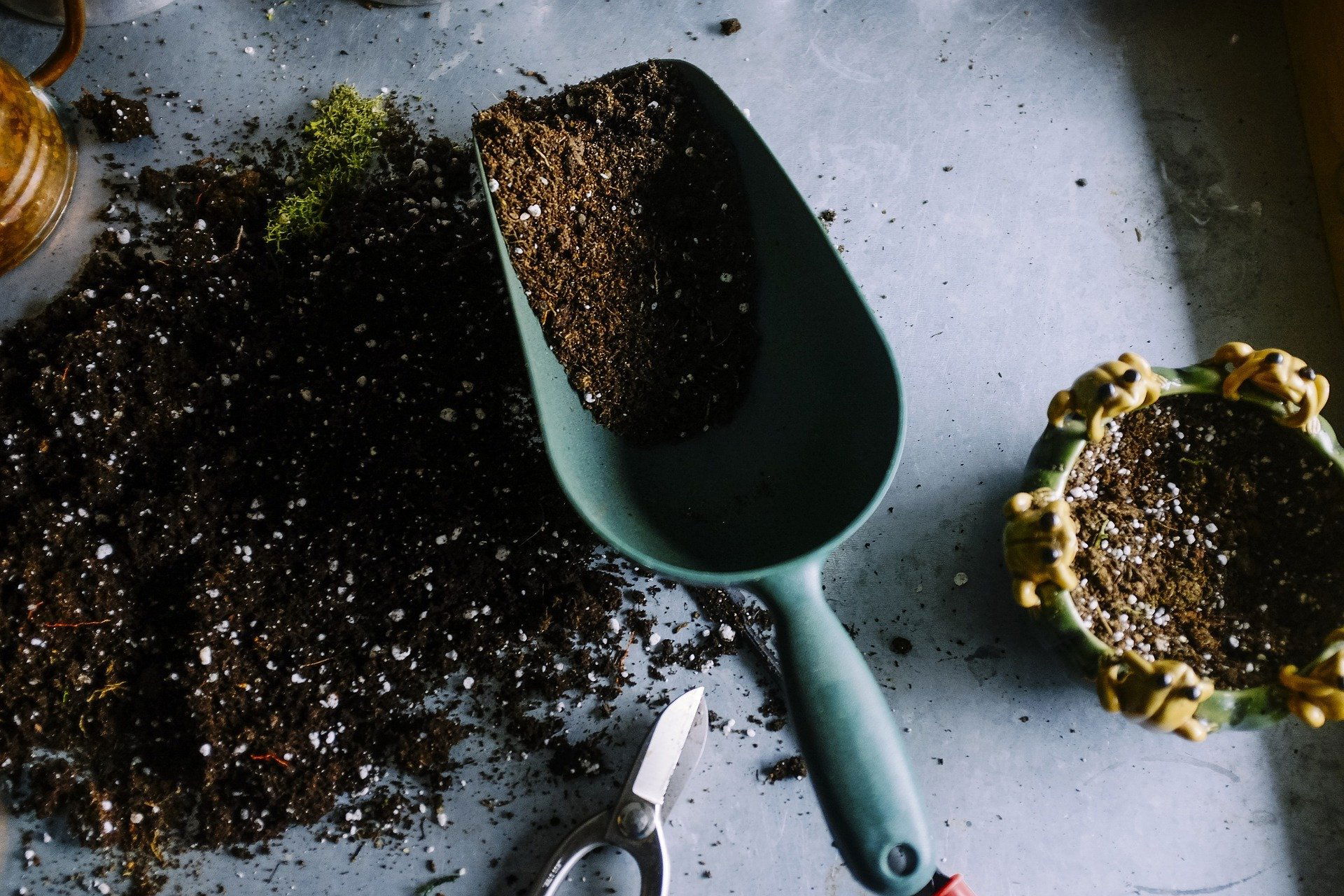Composting 101

The definition of compost is "a mixture of various decaying organic substances, as dead leaves or manure, used for fertilizing soil". While it sounds kind of disgusting, it's actually one of the best things you can do for your yard and garden. When done properly, composting can provide you with rich, fertile soil without the use of any commercial fertilizers. This will save you money, but more importantly, you will harvest produce that was grown without the use of chemicals. Compost-enriched soil retains moisture, suppresses diseases and pests, and reduces your carbon footprint. The organic materials that you put into your compost heap would have otherwise ended up in a landfill, where they take up space and release harmful greenhouse gasses. Additionally, composting reduces the amount of chemical runoff that ends up in the groundwater, and eventually streams, rivers, and lakes.
Now that we know why we should compost, let's look at how to get started composting. There are many types and sizes of compost receptacles, from a small, tumbler-type bin to a larger fenced-off area of your yard. Here at Cartier Farms, our compost heap is just that - a large heap in the back corner of our yard, retained by a fence on the back side and the right side, with the front and the left side open. We had planned on enclosing at least one more side, but our heap took on a life of it's own before we got around to it, and closing it now would be a bigger job than we have time for, and frankly, it works just fine for us the way it is, so we've never really felt the need to spend too much time changing it. I also have a small, store-bought compost tumbler, which I use to compost my chicken manure. Home made compost bins can be constructed from a variety of materials including wooden pallets, hardware cloth, chicken wire, storage bins, plywood, etc. A quick Google search for "DIY compost bins" will provide you with a multitude of ideas for how to get started. There is a compost bin to fit any budget, and any space in your yard.
If you do not have space for an outdoor compost pile, you can compost materials indoors using a special type of bin, which you can buy at a local hardware store, gardening supplies store, or make yourself. Remember to tend your pile and keep track of what you throw in. A properly managed compost bin will not attract pests or rodents and will not smell bad. Your compost should be ready in two to five weeks. (1)
Once you have purchased or constructed your compost bin, it's time to start filling it. The following list by the EPA gives some examples of organic materials that are safe to add to your compost bin:
What To Compost
- Fruits and vegetables
- Eggshells
- Coffee grounds and filters
- Tea bags
- Nut shells
- Shredded newspaper
- Cardboard
- Paper
- Yard trimmings
- Grass clippings
- Houseplants
- Hay and straw
- Leaves
- Sawdust
- Wood chips
- Cotton and Wool Rags
- Hair and fur
- Fireplace ashes (2)
This list, also by the EPA, gives examples of what not to add to your compost bin:
What Not To Compost and Why
- Black walnut tree leaves or twigs
- Releases substances that might be harmful to plants - Coal or charcoal ash
- Might contain substances harmful to plants - Dairy products (e.g., butter, milk, sour cream, yogurt) and eggs*
- Create odor problems and attract pests such as rodents and flies - Diseased or insect-ridden plants
- Diseases or insects might survive and be transferred back to other plants - Fats, grease, lard, or oils*
- Create odor problems and attract pests such as rodents and flies - Meat or fish bones and scraps*
- Create odor problems and attract pests such as rodents and flies - Pet wastes (e.g., dog or cat feces, soiled cat litter)*
- Might contain parasites, bacteria, germs, pathogens, and viruses harmful to humans - Yard trimmings treated with chemical pesticides
- Might kill beneficial composting organisms* Check with your local composting or recycling coordinator to see if these organics are accepted by your community curbside or drop-off composting program. (3)
The EPA suggests this simple formula for adding materials to your compost heap:
All composting requires three basic ingredients:
- Browns - This includes materials such as dead leaves, branches, and twigs.
- Greens - This includes materials such as grass clippings, vegetable waste, fruit scraps, and coffee grounds.
- Water - Having the right amount of water, greens, and browns is important for compost development.
Your compost pile should have an equal amount of browns to greens. You should also alternate layers of organic materials of different-sized particles. The brown materials provide carbon for your compost, the green materials provide nitrogen, and the water provides moisture to help break down the organic matter. (4)
Whether you want to start with a small compost pail in your kitchen, or an elaborate, fenced-off area of your yard, you are sure to find composting a rewarding part of gardening.
1 EPA.gov
2 EPA.gov
3 EPA.gov
4 EPA.gov